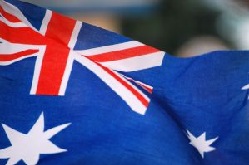When Merck's ($MRK) Gardasil first gained approval in 2006, doctors targeted girls ages 11 and 12 to receive the shot to protect against HPV infections. And though the shot is now recommended for 9- through 26-year-old males to shield against some genital warts, it has yet to take off in that demographic.
 Australia is the exception. On Feb. 15, Australian boys began receiving Gardasil as part of a $21 million program geared toward vaccinating 12- and 13-year-olds. In subsequent months, 14- and 15-year-olds will get the jab, too. More than 280,000 boys are eligible to get free Gardasil injections this year.
Australia is the exception. On Feb. 15, Australian boys began receiving Gardasil as part of a $21 million program geared toward vaccinating 12- and 13-year-olds. In subsequent months, 14- and 15-year-olds will get the jab, too. More than 280,000 boys are eligible to get free Gardasil injections this year.
"We know that vaccinating boys will protect them from cancer and genital warts … and reduce the rates of cervical cancer among women," Tanya Plibersek, federal minister of health, told the International Business Times. "If there was something you could do now, as a parent, that would protect your children from a range of cancers and disease in the future when they are adults, wouldn't you do it?"
More than a million Australian girls ages 12 to 16 have received the HPV vaccine. Health officials expect 405,000 girls and boys to start the three-dose regimen this month. The entire program includes 870,000 vaccinations over the course of four years.
For Merck, that's good news financially. Gardasil brought in $1.63 billion in 2012, a number that far outstrips the competition; GlaxoSmithKline's ($GSK) Cervarix--approved in 2009--made £270 million ($416.44 million).
Australia leads the way in vaccinating boys; many health experts for years campaigned to broaden the vaccine to males in their first year of high school. HPV infects both males and females and is spread during sexual intercourse.
- get more from the International Business Times
- read the release
Related Articles:
Australia backs plan to give HPV vax Gardasil to boys
Parents supportive of vaccinating boys for HPV
Merck, GSK partner with GAVI to provide low-cost HPV vaccine